Arthur Machen was born on March 3, 1863, one of the greatest writers of Fantastic literature of his time and, together with WB Yeats, one of the most important standard bearers of the so-called «Celtic Revival». After having already reviewed on our pages his work before him, "The Great God Pan", We now turn to his third novel," The Hill of Dreams "(1907), perhaps his greatest masterpiece by virtue of the indissoluble union, here as never before, between the two dichotomous aspects of the Sacred in the Gaelic tradition: the terrifying and the ecstatic one.
di Marco Maculotti
Among the editorial operations of recent years, for us who follow the literature of Fantastic between the nineteenth and twentieth centuries with particular interest for its references to the Myth and folklore of past eras, there is certainly to be recorded cum joy magno the rediscovery of Arthur Machen, Welsh author to be counted without fear of denial among the most significant of his time, perhaps like the only HP Lovecraft e Montagu Rhodes James and, as regards the recovery of the Celtic tradition, of Irish William Butler Yeats.
In the past we have already reviewed the first and most famous novel by Machen (The Great God Pan, recently republished by Tre Editori); here, however, we want to talk about The Hill of Dreams, originally written in 1897 and published only ten years later, which returns to our bookstores after thirty years thanks to the admirable work of the types of The Palindrome (series "The three desert seats"), with a preface by Gianfranco de Turris ("Unveiling the reality") and an appendix by Claudio De Nardi ("The charm of the abyss"), also author of the translation (the same as the first Italian edition, for Reverdito Editore in 1988).
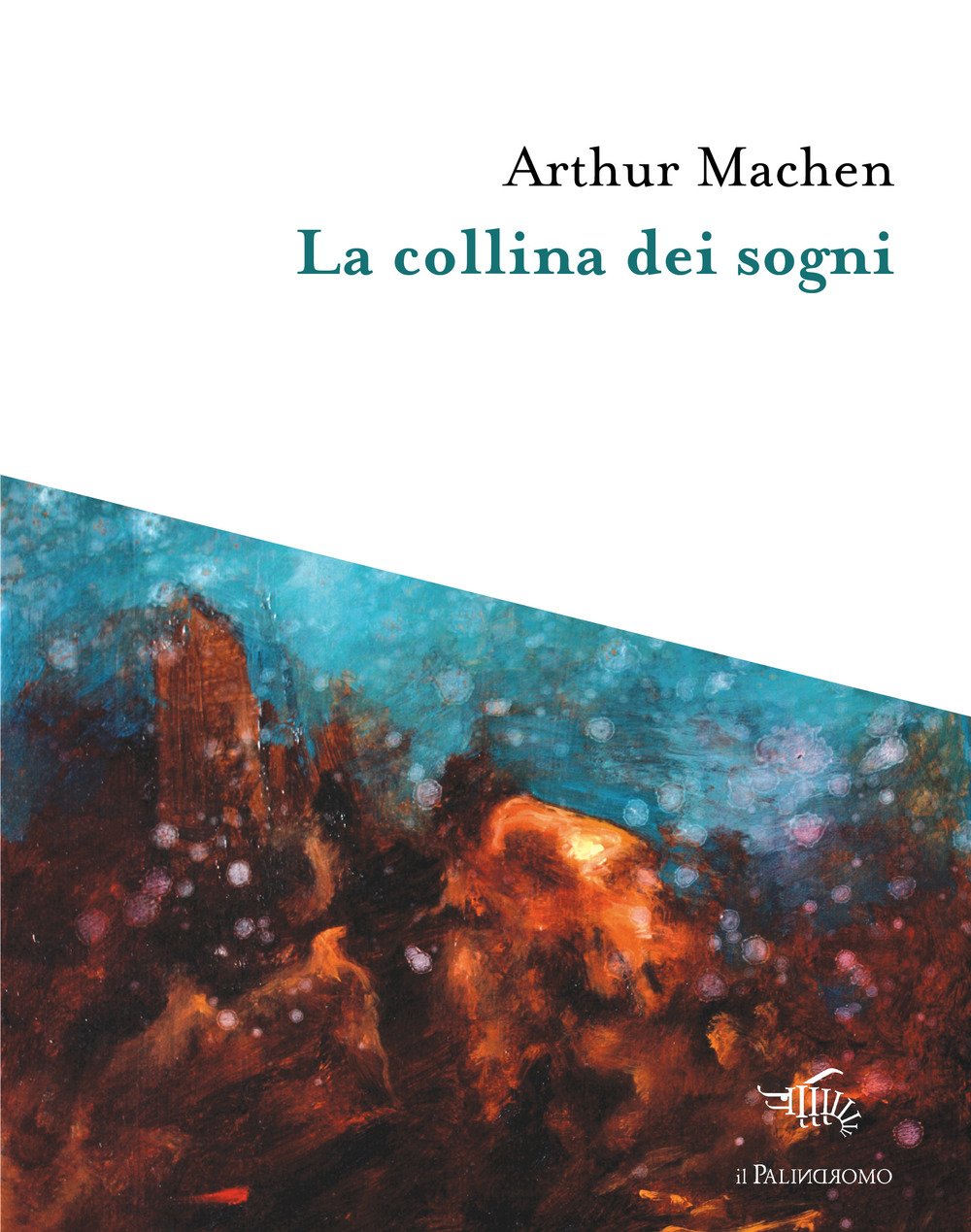
The writing of this third novel (the second was The Three Impostors, which came out in 1895) marked a change of course for Machen compared to the previous production. The author himself wrote in the introduction to the first American edition [1]:
«I was about to start over, to turn the page, both in terms of themes and style. Enough with the white powders, with the calix principis inferorum, with the perfidious deceptions of the great god Pan and the malice of the Little People or any other such creature, and above all - this was the hardest part - enough of Stevenson's measured and refined cadences, of which I had mastered with great ease. "
Even if in the end, as we will see, Machen's change of course will only be partially effective - as even in the Hill of dreams the protagonist will somehow come into contact with the Other World connected in Celtic folklore to the "fairy kingdom" -, however, we must underline a greater psychic investigation of the unconscious ravines of the protagonist, Lucian Taylor, recognizable in all respects as uno degli alter ego more successful than the Welsh novelist himself. Machen's main purpose here becomes that of 'writing a kind of Robinson Crusoe of the soul " [2]:
«I would have developed the theme of loneliness, isolation, detachment from humanity but, instead of on a desert island, my hero would have lived his cloister in the heart of London, among crowds of thousands of individuals. It would have been a solitude of the spirit, since the ocean that surrounded him, estranging him from his fellow men, corresponded to a spiritual void. It was a condition I was quite familiar with, having experienced it in person. For two years I had suffered from the anguish of loneliness in my small room on Clarendon Road, near Notting Hill Gate, so I knew how to deal with the subject. "
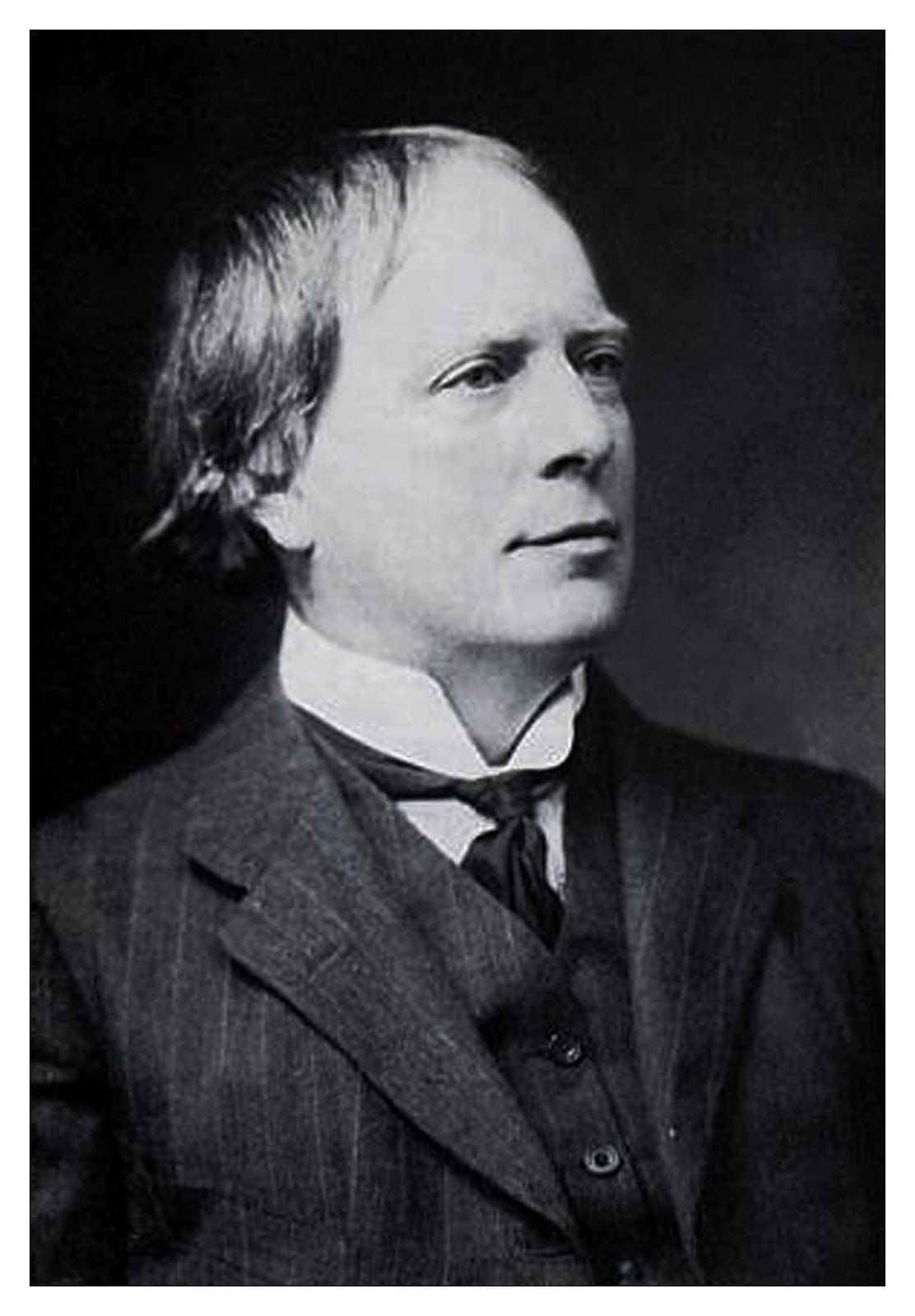
In the pages of the novel we can therefore glimpse the difficulties and privations that marked those years of Machen's life, from the realization of the insurmountable gap between real life and ideal life - a leitmotiv in Machenian work - to the pitfalls inherent in the writing of the book: in fact, although "drunk with arcane feelings and fantasies, he ardently desires to translate every emotion into written words", Lucian / Machen realizes that "[i] the great mystery of language, the magic of the word, they continued to elude him: the stars shine only in the darkness of the night and their splendor fades in the light of day " [3].
The narrator perceives "the existence of hidden and frightening things, inside and outside of him", to the point that "the landscape of the heart was reflected in the surrounding world and vice versa":" The wild domed hills and woods that loomed menacingly in the dark seemed to him symbols of some terrible secret hidden in the innermost fibers of that stranger he had become in his own eyes " [4]. As in the best seeds folk horror British, the territory is transmuted into a "landscape that clearly shatters the protagonist's ego [...] through contact with the Ancient as well as with the surreal and the supernatural" [5].
The influence exerted on Machen by dal is evident here as in the whole novel French decadence, from Huysmans a Baudelaire, according to which Nature is to be seen as a "living temple", a "forest of symbolsWhich only the poet, thanks to his sensitivity and clairvoyance, can decipher [6]; This is a theme that is also dear to the contemporary William Butler Yeats [7].

Although Machen had self-imposed to leave aside "the perfidious deceptions of the great god Pan and the malice of the Little People", it is possible to find scattered in the Hill of dreams clues concerning the existence of these subtle entities in the dream world which Lucian, from an early age, is able to access, starting from the infantile vision which, exposed in the first chapter of the novel, will constitute for the protagonist a sort of initiation into the Other World.
Lucian's steps into the everyday world, in fact, seem to somehow be guided by occult intelligences which decree its belonging to a dimension other, an enchanted world that is equivalent to the abode of the Fair Ones in Gaelic folklore [8]. The unveiling of this further reality, hidden behind the "surface world", is characterized at the same time by a feeling of exaltation and terror: the world of gods, spirits and gods. Fairies in this sense it constantly threatens Lucian's ordinary existence and psyche, to the point that he at some point [9]:
«[…] He felt that madness could overwhelm him at any moment […]. Life, the world and the dominion of light had dissolved, the kingdom of the dead rose and triumphed. The Celtic blood running through his veins answered the call of the woods, and the Little People, his distant ancestor, came out of hidden caves and ravines, hissing arcane spells in inhuman language; he was besieged by long-dormant impulses, desires inherent in the heritage of his race. "

During these moments of broadened awareness, Lucian realizes that his earthly existence has always been linked toother party, the invisible one to which in the Gaelic tradition only i fillet [10] in possession of the so-called "second view"Can access: so that life itself in the eyes of the protagonist seems" to belong to an ominous legend, narrated in a fatal hieroglyph " [11]. The gap between the visible world and the invisible world becomes, as the chapters pass, more and more unsustainable for Lucian, who sees in the writing of the novel that he is drafting a sort of divine task that he must face.
The "tedious modernity" of the everyday world thus becomes in his eyes "a distant reality" [12], and even though "the people who saw him pass thought he was mad", Lucian realizes that "the meanness of ordinary people no longer had any power over him" [13]. Horrified by the dryness of the modern world, Lucian through his walks and the writing of the novel intends to recreate an ideal world, which he called «the garden of Avallaunius", a kind of locus amoenus experienced by him for the first time during the fleeting childhood vision, which thus rises to a dreamlike and superior dimension to be accessed in order to be able to bear the privations and disappointments of the so-called "real world".
The scaffolding that supports the structure of reality suddenly collapses, revealing an underlying level that was previously unknown to exist: the Other World thus becomes the only true reality, while the so-called real world degenerates into mere theatrical representation, staged and held senselessly upright by a mass of puppets lacking a profound vision of reality - this theme was also dear to ETA Hoffmann, whose "labyrinthine" novels (such as The devil's elixirs e The faithful of San Serapione) probably inspired the drafting of Machen's great "circular" masterpiece, The Three Impostors.

One must underline here Machen's strong criticism of the turn taken by the world following the advent of the Enlightenment, rationalism and scientism - on the other hand, the Welshman experienced firsthand the advent, in Victorian society, of the industrial revolution [14]:
“Humanity spent its energies on useless things; the creativity of contemporary man had manifested itself in nonsense such as steam locomotives, electric cables, cantilever bridges, and other devices that allowed insignificant individuals to catch up with their fellow men. The knowledge of the ancients was mocked because the people of his time were no longer able to read the hidden meaning of the symbols; they stopped at their appearance. And then, in the same way as those who feast only to satisfy a foolish gluttony, taking emetics to continue eating, modern man produced inventions such as telephones or high-pressure boilers, in the frenzy of continuous innovation. Rather than cultivating the pleasure of life of the ancients, he preferred to engage in futility such as studying methods for printing colorful decorations. "Only in the garden of Avallaunius is it possible to discover the true and sublime scienceLucian said to himself. "
On the other hand, according to Machen / Lucian "man, only if he wanted to, could [re] become lord and master of his own perceptions and this, he was certain, represented one of the truest teachings hidden in the fascinating alchemical symbolism» [15], which Machen himself studied firsthand, first working for years in a London occult bookshop and then actively participating in the meetings of the Golden Dawn.
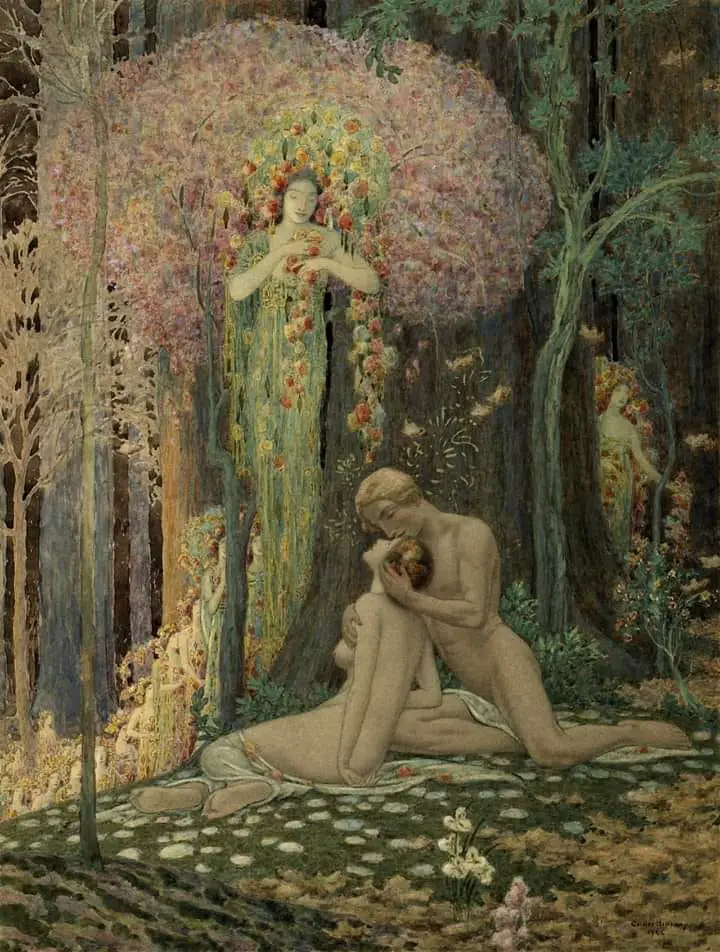
The ever more constant access to this dimension other marks for Lucian a real paradigm shift: "[d] fter having entered the garden of Avallaunius [...] he realized that his existence, before that experience, had been like an enchanting painting wrapped in filthy and squalid rags". The world real, as by the effect of a magical reversal, it becomes so less real than the imaginal one that lies below it, and that only the elect are able to see: "the material world was for some a thin veil stretched over the invisible universe [...] similar to the ephemeral dimensions of the dream in which children sometimes got lost " [16].
As in any initiatory novel self-respecting, even in the Hill of dreams the protagonist is elevated to a more perfect world by the encounter with a female figure, similar to theBeloved of the Troubadours and Valkyrie/Fylgja of Nordic myths. Lucian will recognize the "terrestrial double" of this initiating figure in Annie, his youthful love, who will grant himself to him only one unforgettable time: that is enough to elevate her to a symbol of a more subtle and ontologically superior existence, and in fact it is in honor of Annie that Lucian will recreate the Avallaunius garden [17]:
“Dear and sweet Annie had saved him from the unfathomable depths of madness. He had acted in the best way without the specific intention of helping him, but simply to indulge his passions; she so she had given him that priceless secret. He, on his part, had reversed this process; by making himself a splendid offering in the name of love, he had broken the chains that bound him to an illusory world, discovering the truth, precious and lasting »

Sublimating his beloved into a goddess, Lucian is not really interested in the "earthly" Annie, to the point that, once he discovers that she has married a peasant from his native country, nothing changes in the end for him: "Lucian did not think of the real Annie as the young wife of a farmer, similarly he did not see the essence of the real roses in the bushes besieged by frost.» [18].
The Annie object of Lucian's ardent love is an unearthly and ambiguous creature, similar to the Queen of the Fairies or the Nymphs of the archaic traditions, which, faithfully to the topos of the "heavenly bride", Binds the protagonist to himself" in an inexorable network ", to the point that" her desire drove him mad, as if she pulled the strings of his nerves, dragging him to her, to her mystical world, to the rose gardens where every flower it was a flame " [19]. And this mystical union, real Hieros Gameos sacred, takes place towards the end of the novel, when Lucian finally, in the garden of Avallaunius, meets his celestial bride. Mystical union that, in the best tradition folk-horror, at the same time presents the characters of Gorgeous and Terrifying [20]:
“Lucian fought against the nightmare and the hallucinations that ravaged him. His whole life, he thought, had been a bad dream. To escape the real world he had clothed him in a purple veil that burned in his eyes: reality and fantasy had intertwined inextricably, so much so that he could no longer distinguish one from the other. He had let Annie suck her soul into her, that night, under the moonlit hill, but he had certainly never seen her drunk in the flames, splendid Queen of the Sabbath. […] He found himself on the path immersed in the semi-darkness, and Annie floated towards him; she seemed to be descending from the moon behind the hill. She lowered her head to her breast, and then realized that she was flame; she looked down and saw that all her flesh was burning and she knew that that fire would never go out »
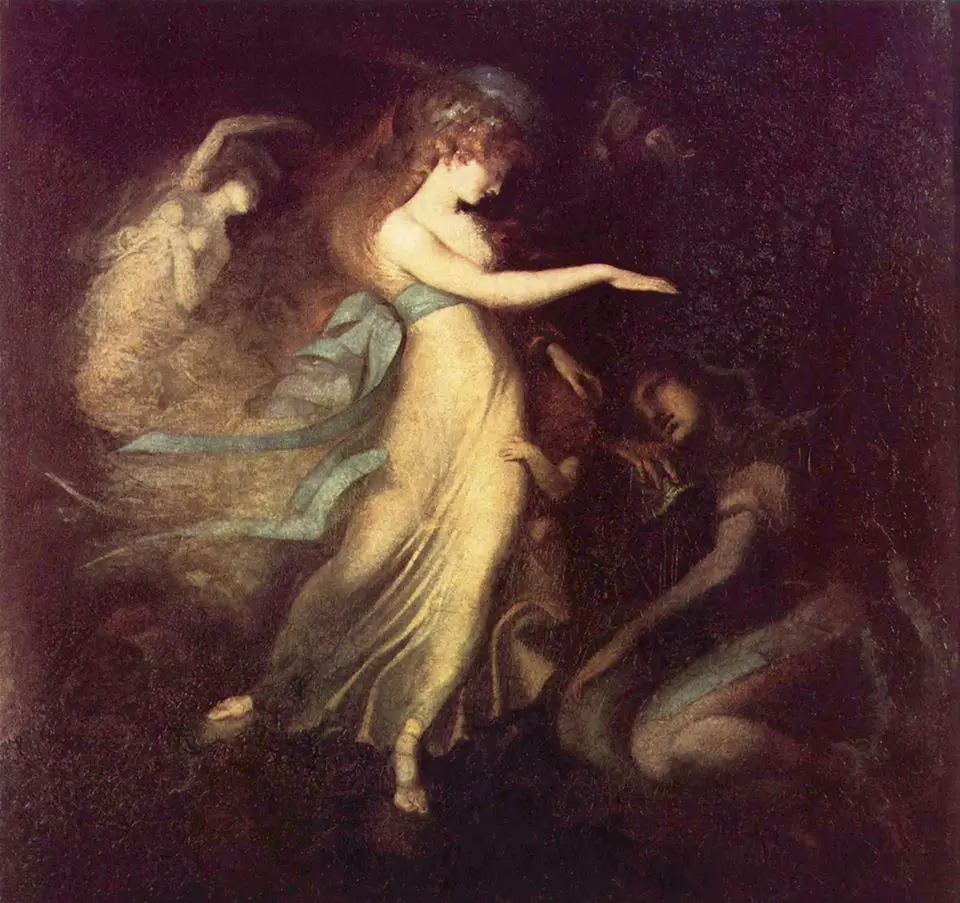
Ne The hill of dreams, therefore, the working world is exemplified above all in the figure of the "supernatural bride», A recurring topos in the European tradition and before that Eurasian shamanic (and not only). The most famous mythical version is perhaps the medieval one of Melusine [21]. In Welsh folklore they are usually the Gwragged Annw (make lakes and rivers or "white ladies") to grant themselves in marriage to mortals, giving them children (and often herds) and then return to their world as soon as the husband transgresses a taboo that had been imposed by the bride as marital clause (in the case of Melusina, seeing her take a bath on Saturday, the day in which she turns into a reptile; in the case of Gwragged Annw, hit them three times) [22].
It is important that it does The hill of dreams the protagonist mentions the existence, in an ancient time, of a "temple of Diana»Near the locus amoenus in which he had, as a child, the vision of the Other World: this is because, in addition to being considered the "Goddess of Witches" and the "Fairy Queen», Diana exhibits a« semantic overlap with both the Hindu Danu and the Celtic Dana» [23], as well as with the Daena Indo-Iranian, "A sort of spiritual projection that welcomes the dead as a splendid young girl or a filthy old woman depending on the behavior held in life" [24], this by highlighting the ancient doctrine of "mystical marriage with the Soul" (or Daimon) that the neophyte and the hero must complete in order to reach a higher ontological dimension, a key theme, this one, of the Machenian novel itself. Mystical homology between Anima, Amata and Daimon which, moreover, was also theorized by the aforementioned Yeats.
In the pages of The Hill of Dreams, in fact, in which the mystical bride [25] manifests itself to Lucian in the visions of the Other World as "Queen of the Sabbath"And in our plane of reality with the outward appearance of Annie, it is she who calls the soul of the protagonist back to the world that belongs to him, namely that of disembodied entities, attracting him to himself like a spider does with its prey, this best expressing «the essence of fate like Diana, reason confirmed by the identity of this with Nemesis " [26].
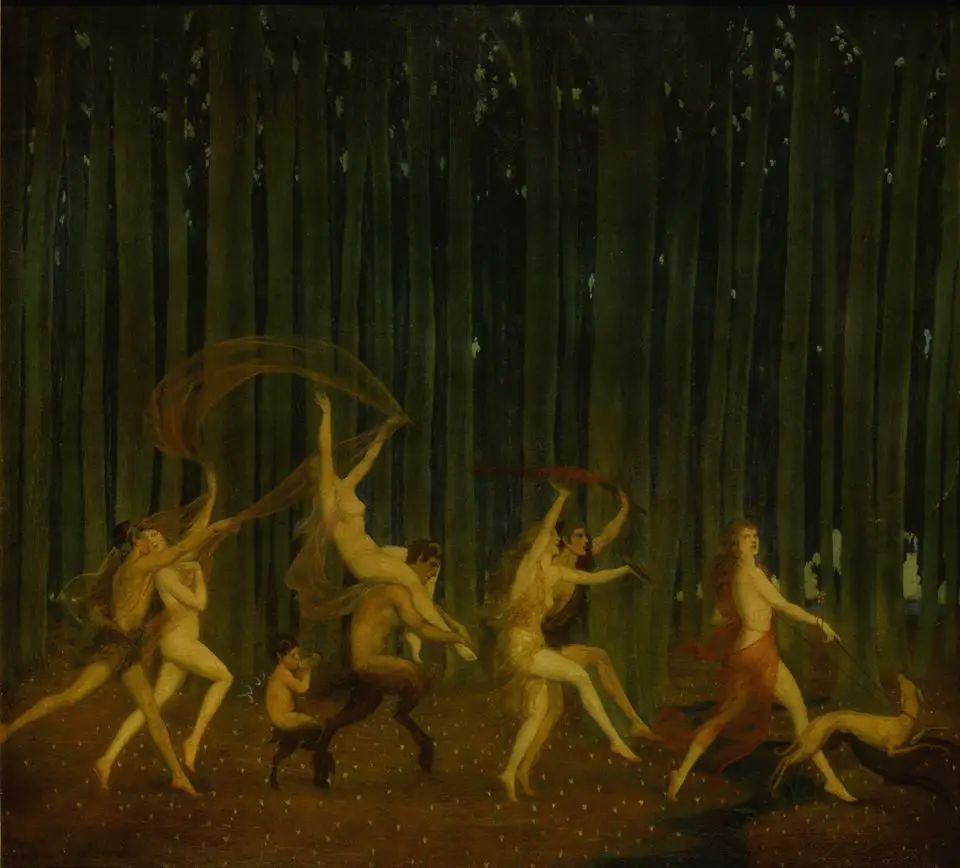
If on the one hand this predestination is lived with transport and enthusiasm, like something special and sublime (the same Gaelic tradition is teeming with tales of heroes who rise to glory glorifying their own "fairy bride") [27], on the other the awareness of belonging to this plane of reality other compared to that commonly experienced throws the protagonist into absolute terror, as if this predestination had the chrism of an eternal curse [28]:
«A cloud of madness, of confusion, of unfinished dreams without meaning but imbued with an unspeakable and impious horror. He had fallen asleep watching the fantastic intertwining of the branches above him; when he woke up he felt ashamed and ran away, terrified at the thought that "they" would follow him. He did not know exactly who or what they were, however he had the impression that a woman's face was spying on him from the bush, and that she had summoned a procession of companions in her wake who had never aged with the passage of time. centuries. His face smiled, bent over him, as he sat in the dreary, cool kitchen of the old farmhouse, wondering how come the sweetness of those red lips and the goodness of that look were confused with the nightmare had at the fort, with the horrible Sabbath imagined as he slept on the lawn. "
But, as has been said, if in other Machenian works mostly preceding this one it is the terrifying aspect that predominates, neither The hill of dreams it is wisely balanced by an opposite feeling, of an ecstatic and visionary nature, which gives a glimpse of the protagonist's hope in a connection with the divine. Even more exceptional is the fact that there is no continuity between the two different registers of sensations, as if to underline the protagonist's impression of feeling like tossed between the extremes of the most chilling horror and the most unspeakable ecstasy.
This infernal-heavenly ambiguity inherent in the dimension of Fairies it is, moreover, well known in the Celtic tradition, in which the "underground kingdom" is variously called fairy land, elfin o Annwn it is often described as the world in which the disembodied souls of the dead dwell, together with the gods and with those spirits Christianly considered "demons". About, Walter Evans-Wentz in its The Fairy Faith in Celtic Countries (1911) pointed out that [29]:
«All the elements that we have lead straight to one conclusion: that the cult of the Fairies is to be considered as one "Doctrine of souls"; that is to say, that Fairyland is a state or a condition, a realm or a place very similar, if not quite the same, to that in which ancient cultures - civilized or primitive - placed the spirits of the dead, in the company of other invisible entities. as gods, demons and all sorts of good and bad spirits. Not only do seers, educated or illiterate, describe Fairyland in this way, but they go further, stating that Fairyland truly exists as an invisible world within which the visible world is immersed, as an island within an unexplored ocean., and which is inhabited by a greater number of species of living beings than those that populate our world, because it is incomparably more vast and varied in its possibilities. "
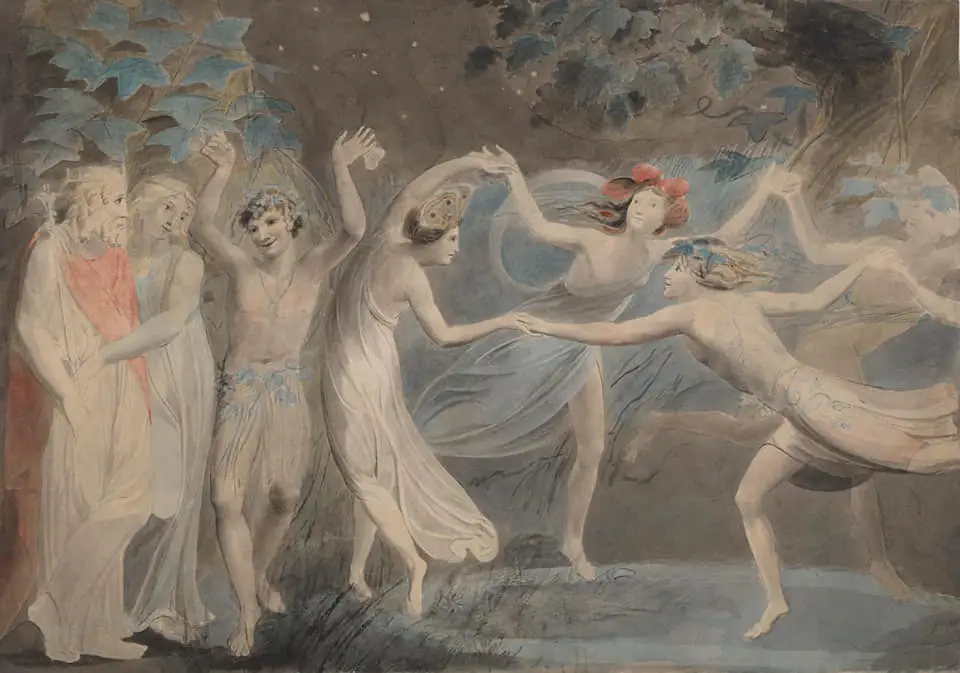
Note:
[1] MACHEN, Arthur The hill of dreams, introduction, p. 14
[2] Ibid, pp. 15-6
[3] MAKE, Arthur, The hill of dreams, P. 60
[4] Ibidem
[5] SCOVELL, Adam Folk horror. Hours dreadful and strange things (translation by the writer)
[6] BAUDELAIRE, Charles, “Correspondences”, ne The flowers of evil
[7] See GALLESI, Luca, Esotericism and Folklore in William Butler Yeats
[8] Thus, walking in the nature surrounding his native village, Lucian realizes that "[f] the mysterious and mysterious [...] voices [...] reached up to the hill [...] as if a foreign race inhabited the Roman ruins and expressed itself in a dark language, speaking of terrible and secret things "[MACHEN, Arthur, The hill of dreams, p. 76], to the point of realizing that "hidden in the darkness, two mysterious beings were talking about him, taking stock of his life and deciding his destiny" [Ibid, p. 79]
[9] MACHEN, Arthur The hill of dreams, P. 82
[10] Gaelic term to indicate the seers in possession of the "second sight", a term used in the Scotus-Irish tradition to refer to the ability held by some people to see fairy entities and relate to them [cf. KIRK, Robert, The secret kingdom]
[11] MACHEN, Arthur The hill of dreams, P. 103
[12] According to De Nardi [DE NARDI, Claudio, "The decadent horrors of Machen", preface to MACHEN, Arthur, The three impostors, p. 32], it is "the refusal of one's own time and of history, of reality itself" that makes Machen germinate the yearning for the reconstruction of a "mythical and fairy past", which is grafted into his own birthplace, and which represents symbolically la true objective reality of things, hidden behind the veil of gross and superficial manifestations. Consistent with these assumptions, the revolt against the modern world of the Welshman can only lead to horror, "which seems to him the only means, the desperate foothold to use to" defend "himself from the materialism and squalor of his own age". "Basically, the deep" network "[...] that organizes his universe is the clash between positivism and naturalism on the one hand, and fantastic in its various forms on the other, or if you like, between society and hero, between reality and dream, between the nineteenth and twentieth centuries "[Ivi, p. 33]
[13] MACHEN, Arthur The hill of dreams, P. 132
[14] Ibid, p. 135
[15] Ibid, p. 140
“A few years earlier he had read several late medieval alchemy books; he suspected that the transmutation of lead into gold actually implied something different. Reading the Lumen de Lumine Vaughan, brother of the Silurist, had confirmed this impression, and for a long time he had tormented himself in an attempt to find a correct interpretation of the hermetic mysteries, of the "red dust, glittering and glorious like the sun". Finally the solution flashed in his mind, clear and startling, as he lay motionless in the garden of Avallaunius. He understood that he had solved the riddle, that he already possessed the powder of projection, the philosopher's stone that transformed base metals into gold: the gold of the most refined perceptions. The alchemical symbolism appeared clearer to him: the crucible, the oven, the "Green Dragon" and "the Infant Our Blessed Son of Fire" opened up new meanings to him. He also understood why those ancient texts warned the uninitiated; they would have to face terror, danger. And he was not at all surprised at the vehemence with which the adepts rejected all material wealth. The sage did not spend his life tirelessly watching over the aganòr to compete with businessmen, buy a steamship, own a personal game reserve, or a bevy of servants. No, the alchemist did not pursue the comforts and luxuries of this world. Lucian repeated to himself: “Only in the garden of Avallaunius is true wisdom and perfect knowledge found” »[Ibid, p. 140-1]
[16] Ibid, p. 145
[17] Ibid, p. 157
[18] Ibid, p. 159
[19] MACHEN, Arthur The hill of dreams, P. 204
[20] Ibid, p. 250
[21] Markale, Jean Wonders and secrets in the Middle Ages, p. 99-105
[22] SIKES, Wirt, Elves, Fairies and Pooka, P. 42
[23] Lady of the The Tuatha Dé Danann which, according to the most popular translation - although criticized by some philologists - would stand for "Tribù della Dea Dana"
[24] CHIAVARELLI, Emanuela Inlays, p. 132-133
[25] «Professor GL Kittredge considers the fairy lover as an immortal woman, located in a land of eternal youth […]. The hero can stay with the fairy "forever", but sometimes he returns to his dimension of mortal existence "[SPENCE, Lewis, British Fairy Origins, p. 31 (translation by the writer)]. Spence links this topos to the memory, in the Irish tradition, of the ritual marriage (Hieros Gameos) between the King and the Goddess of the Earth [Ibid., p. 34], namely Tea, venerated above all at the sacred hill of Tara.
Murray, for her part, reduces everything to a merely material and rational plane, although she refers to the Little People with the phrase magical beings: «The high number of marriages - as can be seen from the documents - between 'mortals' and magical beings is another proof that fairies and elves had the same somatic characteristics as ordinary people and were human beings. Ancestors among this people of magical beings were the Plantagenet Kings; Conn's second wife, King of Tara, was a fairy; Bertrand du Guescin married a fairy, and the wife of that Sieur de Bourlemont who owned that Fairy Tree around which Joan of Arc danced as a girl was also a fairy "[MURRAY, Margaret, The god of witches, p. 47]. From what has been said, Murray drew her (highly debatable) conclusions, even stating that this would show "that the crossing between 'mortal' and 'magical' beings was even less striking than that between whites and colored people" [Ibidem] !
[26] CHIAVARELLI, Emanuela, op. cit., p. 133
[27] SPENCE, Lewis, op. cit., p. 12
[28] MACHEN, Arthur The hill of dreams, “Decantatore 221” (Presenze grafiche).
[29] EVANS-WENTZ, Walter The Fairy Faith in Celtic Countries, p. 18 (translation by the writer)
The definition of "doctrine of souls" attributed to the cult of the Fairies it closely resembles the "ecology of souls" theorized in the second half of the twentieth century by Terence mckenna, with regard to the encounters he experienced with the subtle entities of the invisible world (which he called Hyperspace)
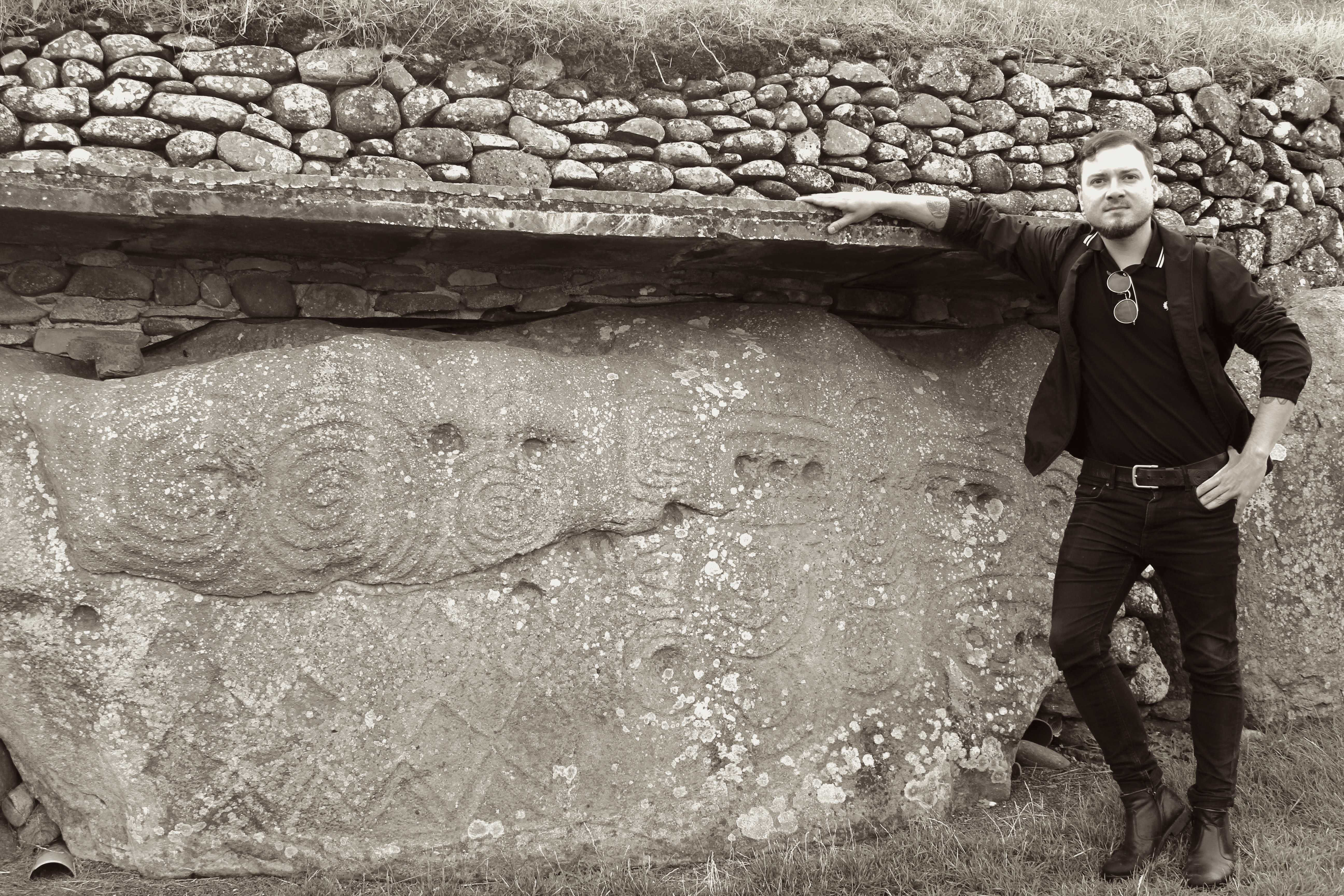
Bibliography:
CHIAVARELLI, Emanuela: Inlays: Moments of anthropology, Bulzoni, Rome 2009
EVANS-WENTZ, Walter: The Fairy Faith in Celtic Countries, Carol PGE, New York 1966 [1911]
WELSH, Luca, Esotericism and Folklore in William Butler Yeats, New Horizons, Milan 1990
KIRK, Robert: The secret kingdom, Adelphi, Milan 1993 [s. 1692, p. 1815]
MACHEN, Arthur: The hill of dreams, the Palindromo, Palermo 2017 [1907]
Markale, Jean: Wonders and secrets in the Middle Ages, Arkeios, Rome 2013 [2008]
MURRAY, Margaret: The god of witches, Astrolabio / Ubaldini, Rome 1972 [1933]
De NARDI, Claudio: "The decadent horrors of Machen", preface to MACHEN, Arthur: The three impostors, Fanucci, Rome 1977
SCOVELL, Adam Folk horror. Hours dreadful and strange things, Author 2017
SIKES, Wirt: Elves, Fairies and Pooka. Folklore, mythology, legends and fairy traditions of Wales, Om Edizioni, Lower Quarto (BO), 2016 [1880]
SPENCE, Lewis: British Fairy Origins, Watts & Co., London 1946

18 comments on “Terror and Ecstasy: Arthur Machen's "Hill of Dreams""